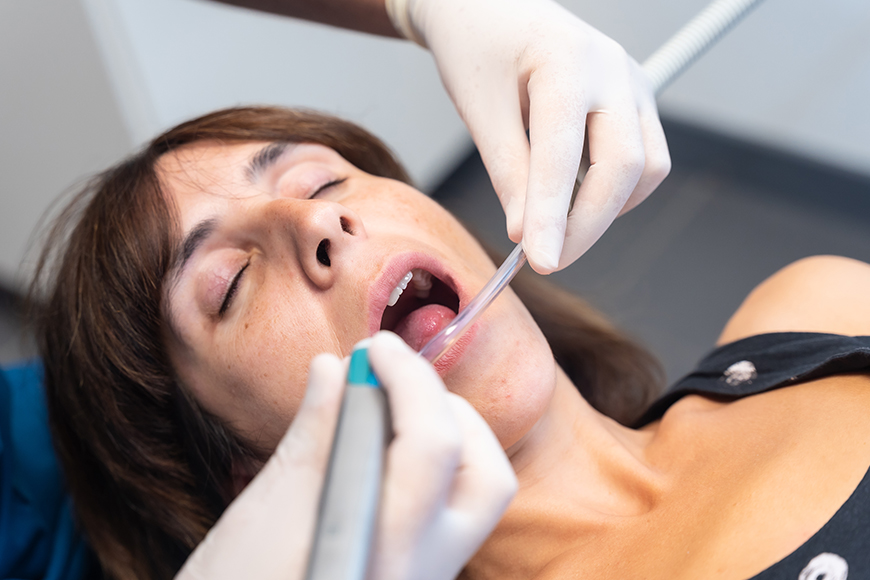Wisdom teeth, those mysterious third molars lurking in the back of your mouth, often cause more trouble than they’re worth. While some people may never experience any issues, many others find themselves facing pain, discomfort, and potential oral health problems thanks to these late-blooming teeth. So, when to remove wisdom teeth becomes a crucial question. This comprehensive guide will delve into the signs and symptoms that indicate wisdom tooth extraction is necessary, explore the reasons behind their existence, and provide valuable recovery tips to ensure a smooth healing process.
Why Do Wisdom Teeth Exist?
Before we dive into the “when” of wisdom tooth removal, let’s address the “why” of their existence in the first place. Anthropologists believe that wisdom teeth, also known as third molars, were essential for our ancestors who consumed a diet of coarse, rough food that required significant chewing power. These extra molars provided the necessary surface area to grind down tough plants and uncooked meat.
However, as human diets evolved and became softer, the need for wisdom teeth diminished. Our jaws also gradually became smaller, leaving insufficient space for these third molars to erupt properly. This evolutionary change is the primary reason why wisdom teeth often become impacted, leading to a range of dental issues.
Signs and Symptoms: Recognizing When to Remove Wisdom Teeth
Impacted wisdom teeth can cause a variety of problems, ranging from mild discomfort to serious infections. Recognizing the signs and symptoms is crucial in determining when to seek professional dental advice and consider extraction. Here are some red flags to watch out for:
- Pain: This is often the most noticeable symptom. Pain can be localized in the back of the mouth, radiate to the jaw and ear, or even cause headaches.
- Swelling: Inflammation around the impacted tooth can cause visible swelling in the jawline and cheek.
- Tenderness: Gums surrounding the wisdom tooth may be tender to the touch and bleed easily.
- Difficulty Opening Mouth: Impacted wisdom teeth can restrict jaw movement, making it difficult to open your mouth wide.
- Bad Breath: Food particles and bacteria can get trapped around impacted wisdom teeth, leading to persistent bad breath.
- Recurring Infections: Pericoronitis, an infection of the gum tissue around a partially erupted wisdom tooth, can cause pain, swelling, and pus discharge.
If you experience any of these symptoms, it’s crucial to schedule a consultation with a dentist, like the experts at Madison Dentistry & Implant Center. They can evaluate your specific situation, take X-rays to assess the position of your wisdom teeth, and determine if extraction is necessary.
When is the Best Time for Wisdom Tooth Removal?
While the presence of symptoms is a clear indicator, sometimes it’s advisable to remove wisdom teeth even before they cause problems. Proactive extraction can prevent potential complications down the road. Here are some factors that influence the timing of wisdom tooth removal:
- Age: Younger individuals typically experience easier and faster healing. Dentists often recommend removing wisdom teeth in the late teens or early twenties when the roots are not fully developed, and the bone surrounding the teeth is less dense.
- Position and Development: Impacted wisdom teeth that are severely angled or positioned close to nerves and other teeth are more likely to cause problems and are often recommended for removal.
- Overall Oral Health: Maintaining good oral hygiene can be challenging with impacted wisdom teeth. Removing them can help prevent cavities, gum disease, and other oral health issues.
Wisdom Teeth Removal: The Procedure
Wisdom tooth extraction is a common surgical procedure performed by a dentist or oral surgeon. Here’s a brief overview of what you can expect:
- Anesthesia: You’ll receive local anesthesia to numb the area around the tooth. In some cases, sedation or general anesthesia may be used.
- Incision: The dentist will make an incision in the gum tissue to access the impacted tooth.
- Bone Removal: If the tooth is embedded in the jawbone, a small amount of bone may need to be removed.
- Tooth Sectioning: In some cases, the tooth may be divided into sections for easier removal.
- Extraction: The tooth is carefully extracted from the socket.
- Stitches: Dissolvable stitches may be used to close the incision.
- Gauze and Instructions: You’ll be given gauze to bite down on to control bleeding and provided with detailed post-operative instructions.
Wisdom Teeth Removal Recovery Tips
Proper aftercare is crucial for a smooth and comfortable recovery. Here are some essential tips to follow:
- Rest: Take it easy for the first 24-48 hours after surgery. Avoid strenuous activities.
- Ice Packs: Apply ice packs to the outside of your jaw to reduce swelling and pain.
- Pain Management: Take prescribed pain medication as directed. Over-the-counter pain relievers like ibuprofen can also be helpful.
- Soft Food Diet: Stick to soft foods like soup, yogurt, mashed potatoes, and smoothies for the first few days. Avoid hard, crunchy, or chewy foods that can irritate the extraction site.
- Oral Hygiene: Gently brush your teeth and tongue, avoiding the extraction site. Rinse with warm salt water several times a day to promote healing and prevent infection.
- Avoid Smoking and Straws: Smoking and using straws can create suction in the mouth, which can dislodge the blood clot and delay healing.
Wisdom Teeth Removal Food: What to Eat
Choosing the right foods after wisdom tooth extraction is essential for comfort and healing. Here are some suitable options:
- Soups: Broth-based soups provide nourishment and are easy to consume.
- Smoothies: Blend fruits, vegetables, and yogurt for a nutritious and easy-to-swallow meal.
- Mashed Potatoes: A comforting and soft food that provides energy.
- Yogurt: Rich in protein and calcium, yogurt is a soothing option.
- Applesauce: A smooth and sweet treat that’s easy on the extraction site.
- Scrambled Eggs: A good source of protein that can be easily chewed.
- Avocados: Soft and packed with healthy fats, avocados provide essential nutrients.
Avoid foods that are:
- Hard and Crunchy: Chips, nuts, and popcorn can irritate the extraction site.
- Chewy: Candy, gum, and steak can be difficult to chew and may cause discomfort.
- Spicy: Spicy foods can irritate the wound and cause pain.
- Acidic: Citrus fruits and tomatoes can increase sensitivity.
Wisdom Teeth Removal in Madison
Unsure when to remove wisdom teeth? Residents of Madison, Morristown, Chatham, Florham Park, Convent Station, and beyond can find expert guidance at Madison Dentistry & Implant Center. Their skilled dentists offer comprehensive care, including wisdom tooth extractions, using the latest technology to minimize discomfort and ensure a positive outcome. They’ll walk you through the entire process, from determining when to remove wisdom teeth to post-extraction care.
Conclusion
Deciding when to remove wisdom teeth is a crucial step in maintaining optimal oral health. By recognizing the signs and symptoms, understanding the risks of impacted wisdom teeth, and seeking professional dental advice, you can make informed decisions about your oral care. Remember, proactive extraction can prevent potential complications and contribute to a healthier, happier smile.
If you’re experiencing any issues with your wisdom teeth or have concerns about their development, don’t hesitate to contact Madison Dentistry & Implant Center for a consultation. Their dedicated team is committed to providing exceptional dental care and helping you achieve a lifetime of healthy smiles.




